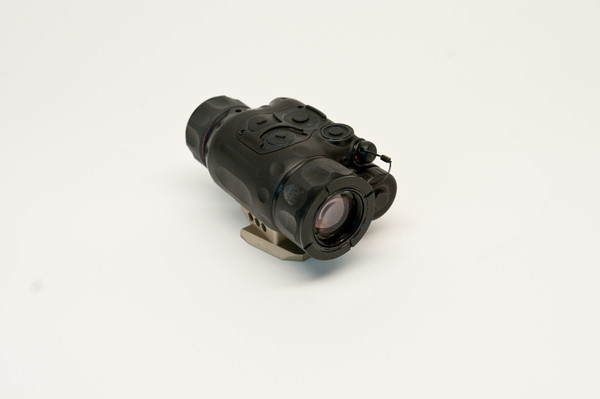Imagine you could see through the smoke, haze and darkness caused by structure fire and accurately locate people trapped among the debris and save their lives.
To do this, your eyes would need to see far beyond our limited capacity to see colors deeper than red. You would have to see the always available radiation emitted in what is categorized as the far-infrared. Infrared radiation is more familiar as “heat,” which you can feel but cannot see it with the unaided eye. Far-infrared refers to a band of radiation that can pass through not only smoke but through the atmosphere itself.
Now, imagine once more that you are on a space-platform above the Earth and when you look down at the night-time unlit sphere of Earth you can define the magnificent continents and oceans of our planet.
Do such eyes exist? Yes, right here in Lexington in the BAE Systems group located at 2 Forbes Road.
On a recent afternoon, Peter W. Norton, technical director for survivability and targeting solutions at BAE Systems, sat down to discuss revolutionizing night vision.
Prompted by his master’s thesis advisor, who was aware of the breakthrough detector activities at the facility, Norton joined the company in 1985, straight out of Tufts University. At that time the facility was owned by the Honeywell Corporation, the company that initially sponsored the far-infrared detector research.
Norton’s technical leadership was invaluable both in optimizing the flagship, extremely high-performance mercury-cadmium-telluride (MCT) detector arrays that operate at very low temperature and the newer breakthrough microbolometer detector arrays that operate at room temperature. If the term “arrays” seems unfamiliar, modern TV screens consist of arrays of devices such as light-emitting diodes (LEDs) to produce the television images.
Development of the microbolometer detector was driven by technical issues inherent in MCT material that requires operating temperatures hundreds of degrees below 0 degrees Fahrenheit. With cooling comes bulky size and high cost. The operating temperature is really cold. A tennis ball at that temperature dropped to the floor would explode into a hundred pieces.
However, as Norton is quick to point out, the MCT detectors have been a highly successful product. In fact, where cooling can be efficiently provided the versatile detectors fulfill a diverse range of commercial, industrial and military applications. Most importantly, they can be tuned to sense different regions of the infrared by varying the percentage of mercury in the compound. The result is a full line of BAE-manufactured MCT detector arrays for use in the guidance systems of Maverick air-to-air missiles, NASA space-born applications and night vision sensors for the United States Army.
The compound mercury-cadmium-telluride may also seem a bit mysterious, but mercury, cadmium, and tellurium are integral to our daily life. A tiny amount of mercury is found in every compact fluorescent bulb, cadmium is a key component in nickel-cadmium batteries and tellurium is used to make the ubiquitous rewritable optical discs.
In contrast, the microbolometer uses the material vanadium-oxide. This material is widely used in the manufacture of sulfuric acid. However, its ability to produce large changes in resistance as a result of very small changes in temperature makes it an ideal material for far-infrared microbolometers.
As the years passed, Norton moved the MCT product line to more efficient and more cost effective manufacturing processes through the use of advanced device design. All the while he maintained his desire to greatly expand far-infrared applications through the design of a hand-held far-infrared camera that operates at room temperature using a battery for power.
The problem to be solved concerned the development of high performance microbolometers coupled to tiny, low-power electronic read-out chips.
Norton’s patience was rewarded as semiconductor technology eventually provided the necessary chips called a readout-integrated-circuit (ROIC). An ROIC can be custom designed to the required length of two-thousands of an inch. That is about the diameter of a human hair. In this design, the tiny vanadium oxide detectors are electrically connected to the ROICs to create an extraordinary far-infrared array.
At this writing, over one-hundred thousand microbolometer-based cameras are in use throughout the world. What does the future hold? Norton envisions a far-infrared camera the size of a cell phone.
Now, that’s what I call a revolution.
Article Written By: Jay J. Schlickman


